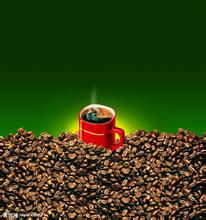How long does it take for coffee to blossom to bear fruit? requirements of planting environment on natural conditions
How long does it take for coffee to blossom to bear fruit? requirements of planting environment on natural conditions
The first flowering period of the coffee tree is about three years. The five-petal tube-shaped white flowers are filled with a faint scent of jasmine, and the inflorescences are arranged in dense clusters. It will wither after two or three days of flowering and begin to bear fruit after a few months. The fruit is a drupe with a diameter of about 1.5cm, which is green at first, then turns yellow gradually, turns red when ripe, and is very similar to cherries, so it is called cherry coffee (Coffee Cherry), which can be harvested at this time.
Coffee fruit contains two seeds, namely coffee beans. The two beans are connected face to face with each other on one side of the plane. Each coffee bean has a thin outer film, which is called silver skin, and its outer layer is covered with a yellow outer skin, called endocarp. The whole coffee bean is wrapped in a sticky pulp to form the coffee pulp, which is soft and sweet, with the outer shell.
Coffee beans (Coffee Beans). Coffee varieties can be divided into small-grain, medium-grain and large-grain species, the former contains low caffeine content and strong flavor, while the latter two have high caffeine content but poor flavor. Coffee sold in the world is generally made of small and medium seeds in different proportions, usually 70% of medium seeds, mainly caffeine, and 30% of small seeds, mainly for their aroma. Each coffee variety generally has a few to a dozen variants. Coffee is more resistant to shade and cold, but not resistant to light, drought and disease. Coffee contains nine kinds of nutrients, such as caffeine, protein, crude fat, crude fiber and sucrose. As a beverage, coffee is not only mellow and delicious, slightly bitter and sweet, but also can excite nerves and dispel fatigue. In medicine, caffeine can be used as an anesthetic, stimulant, diuretic and cardiotonic, as well as to help digestion and promote metabolism. The pulp of coffee is rich in sugar and can be used to make sugar and alcohol. Coffee flowers contain essential oils, which can extract high-grade spices.
The harvest time of coffee varies from region to region. Regions north of the equator (such as Ethiopia and Central America) are generally harvested from September to November. South of the equator, such as Brazil and Zimbabwe, although the harvest can last until August, the main one is in April or May. Countries in the equatorial region, such as Uganda and Colombia, can harvest all year round, especially those plantations that can make good use of different elevations. As a result, there may be new coffee beans for most of the year.

Important Notice :
前街咖啡 FrontStreet Coffee has moved to new addredd:
FrontStreet Coffee Address: 315,Donghua East Road,GuangZhou
Tel:020 38364473
- Prev

American coffee filter paper can be used several times.-what about coffee without filter paper?
American coffee filter paper can be used several times-coffee without filter paper how to do (1) if the power is turned on. Please unplug the power supply and cut off the power, remove the glass from the product and rinse it with water directly. (2) rotate to the right to open the filter basket and remove the filter basket and screen. First remove the coffee powder used in the filter, and then rinse directly with clean water. (3) use the funnel directly.
- Next

Coffee Filter Paper-How to Use Coffee Filter Paper
1. Steaming phenomenon: expansion into small hills When hot water is poured, the gas in the coffee powder expands due to heat (coffee powder will look like honeycomb, there are many gaps), after the gas expands, it will start to discharge excess gas. At this time, because the gas is continuously discharged, it will cause coffee powder and hot water to appear in appearance.
Related
- What brand of black coffee is the most authentic and delicious? what are the characteristics of the flavor of the authentic Rose Summer Black Coffee?
- Introduction to the principle and characteristics of the correct use of mocha pot A detailed course of mocha pot brewing coffee is described in five steps.
- Which is better, decaf or regular coffee? how is decaf made?
- How much is a bag of four cat coffee?
- How about four Cat Coffee or Nestle Coffee? why is it a cheap scam?
- Which is better, Yunnan four Cats Coffee or Nestle Coffee? How about cat coffee? is it a fake scam? why is it so cheap?
- How about Cat Coffee? what grade is a hoax? which instant coffee tastes better, four Cat Coffee, Nestle Coffee or G7 coffee?
- Process flow chart of coffee making-Starbucks coffee making process what coffee tastes good at Starbucks
- The top ten best coffee beans in the world Rose summer coffee or Tanzanian coffee tastes good
- Yunnan four cat coffee is good to drink?_four cat coffee is a big brand? four cat blue mountain coffee is fake?

